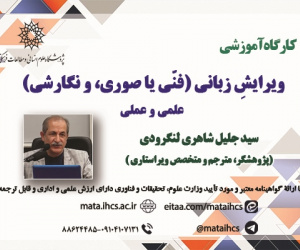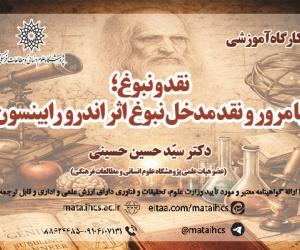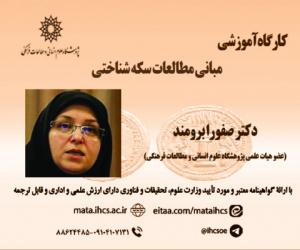کلمه «مِثل» در قرآن و آیات تحدّی آن (مقاله علمی وزارت علوم)
درجه علمی: نشریه علمی (وزارت علوم)
آرشیو
چکیده
«مِثل» ماده ای نسبتا پربسآمد در قرآن کریم است. بسیاری از واژه شناسان آن را به یک دید نگریسته اند؛ عالمان علوم قرآن در علم إعجاز و تحدی قرآن به جنبه های معنای آن کمتر توجه داشته اند؛ این امر موجب برداشت های غیر دقیق از آن و از سوی دیگر سردرگمی در إعجاز و آیات تحدی قرآن گردیده است.دراین مقاله، تعیین معنای مشترک و نیز یافتن تفاوت معنایی و کاربردی آن دو کلمه و وجوه معنایی «مِثل» به منظور شناخت بهتر و دقیق تر؛ خصوصا ارتباطی که با وجوه إعجاز قرآن مجید پیدا می کند دنبال می شود.این پژوهش با استفاده از روش توصیفی-تحلیلی درصدد دست یابی به اهداف یادشده است.با این پژوهش به دست می آید که معنای«مثل» مشابهت است؛ ولی شباهت، وجوه و جنبه هایی همچون صورت؛ جنسیّت؛ کمیّت وکیفیّت دارد. در هیچیک از کاربردهای آن، همه جنبه های همانندی منظور نیست بلکه یک یا دو جنبه مورد نظر است. در آیات تحدی، جنبه محوری در شباهت، کیفیّت معنایی است؛ گرچه اندکی به صورت نیز نظارت می یابد.بر این اساس، از یک سو کاربردهای «مثل» در قرآن، دلالت بر یکی دو جنبه مشابهت و عدم دلالت بر همه معانی مشارکت را، به دست می دهد و از دیگرسو تحدی قرآن را با توجه به دو جنبه کیفیّت و صورت، وارد و درست می نماید و با توجه به این جنبه ها، شناخت دقیق تر دسته ای از کلمات قرآن و أبعاد یکی از علوم آن فراهم می آید.The Word “Mithl” in the Qur’an and Its Challenging Verses (āyāt al-Taḥaddī)
The word "mithl" is a relatively frequent term in the Holy Qur'an. Many lexicographers have viewed it from a single perspective, while Qur'anic scholars in the miraculous field (iʿjāz) and challenge (taḥaddī) have paid less attention to its semantic aspects. This has led to imprecise interpretations and confusion regarding the Qur'an's inimitability and verses of challenge. This article aims to determine the common meaning and identify the semantic and functional differences of this word, as well as its semantic aspects, to gain a better and more accurate understanding, especially in relation to the aspects of the Qur'an's miracle. This research employs a descriptive-analytical method to achieve the aforementioned objectives. It reveals that the meaning of "mithl" is similarity; however, this similarity has various aspects and facets such as form, gender, quantity, and quality. In none of its uses does it imply similarity in all aspects; rather, one or two aspects are intended. In the verses of challenge, the central aspect of similarity is the quality of meaning, although it also slightly pertains to form. Based on this, the uses of "mithl" in the Qur'an indicate one or two aspects of similarity and do not imply all meanings of participation. Furthermore, it validates the Qur'an's challenge by considering the two aspects of quality and form. Considering these aspects provides a more precise understanding of a group of Qur'anic words and the dimensions of one of its sciences.









